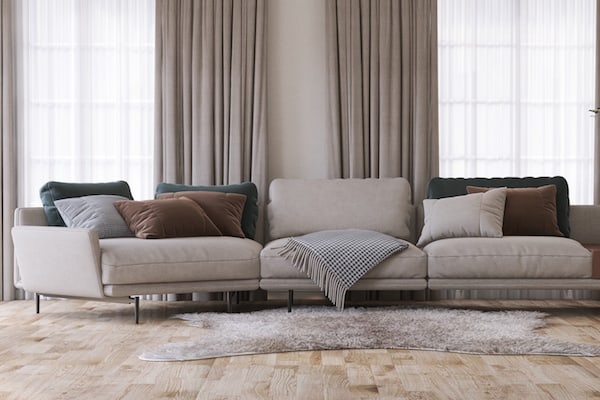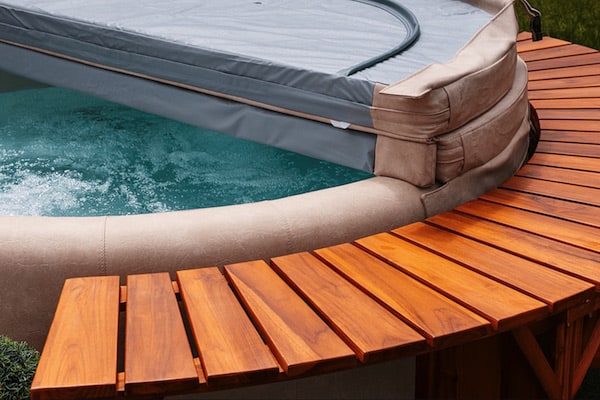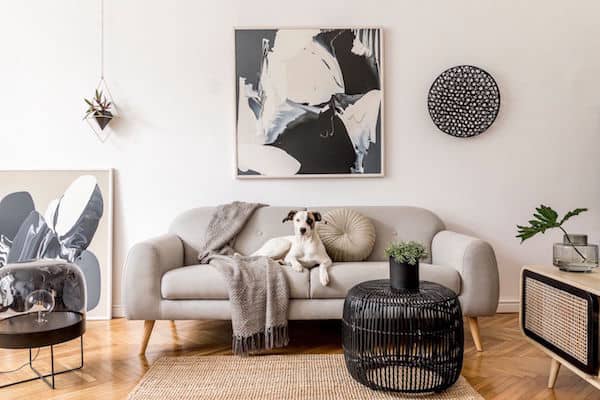How to Make Your Own Outdoor Cushions
Do you have wooden, metal or wicker outdoor furniture that needs a comfort facelift? Outdoor cushions completely change the look and feel of your patio furniture and often add some fun personality to the space. Existing patio cushions also need to periodically be replaced due to wear and tear. Instead of just buying whatever the original manufacturer has available, this is the perfect time to replace the cushions with something that has a different firmness level or is made of different materials.
FoamOrder.com offers a variety of custom outdoor cushions that are made to order. But we also carry the materials, tools and supplies to create DIY patio cushions. Making outdoor cushions is a fun money-saving project to get the cushions looking and feeling exactly the way you want. It also lets you accommodate oddly-shaped furniture or place cushions in places where they wouldn’t normally go such as on top of a coffee table.
If this sounds like a great idea to you, FoamOrder.com is here to help you tackle the job. This step-by-step guide will walk you through the process of how to make outdoor cushions, including listing all the materials you need. Are you ready for your next DIY? Let’s get started.
Cushion Materials Needed
When you decide to make your own outdoor cushions, you’ll first need to gather the right supplies. You don’t want to be caught mid-project and realize you’re missing something you need! Here are the materials you need to make outdoor furniture cushions.
Cushion/Padding
Look for cushion foam that is waterproof and durable since it will be exposed to the elements outside. Outdoor foam, also known as dry-fast foam has an open-cell structure to allow water to flow freely through the cushion and dry quickly.
Plywood
If you’re making an outdoor bench cushion or have outdoor furniture with a slatted seat, you’ll want to add exterior/outdoor plywood underneath the cushion foam or padding to create a stronger base.
Fabric
Quality fabric is required to make your DIY outdoor cushion covers. You can choose any pattern you like, but you want to look for fabric that is specifically made for outdoor use. This type of fabric should be waterproof, UV-resistant and extremely durable. FoamOrder.com offers a wide range of durable, UV-resistant Sunbrella® fabrics.
Sewing Machine
When you are ready to put your cushion together, make sure you have a sewing machine on hand. Since you want these cushions to last for a long time, avoid hand-stitching or gluing the fabric to ensure the best results.
Thread
The type of thread you use when sewing your outdoor cushions is just as important as the fabric you choose. Look for a thread that is UV-resistant, high-strength and mildew-resistant. We have found these thread types to work well on outdoor cushions:
- Lifetime threads
- Polyester
- Nylon
- Monofilament
Zipper
You need one zipper for every cushion you make, and it needs to be the same length as your cushion so you can insert or remove it.
Fabric Scissors
Invest in a good pair of fabric scissors. It will make it easier to cut the fabric and create smoother cuts.
Sewing Pins
Once you have the fabric pieces cut out and you are ready to sew them together, you’ll need sewing pins to hold everything in place. These pins ensure the fabric stays in line and helps create straight stitches.
Making Outdoor Cushions
Now that you have the materials, it’s time to go over how to make patio cushions. Making your own outdoor furniture cushions is fairly easy. Follow a few simple steps and you’ll be sitting comfy in no time.
Step 1: Measure Furniture Seats to Determine Cushion Size
First, you’ll need to measure the seat where the new cushion will go. Measure the width and depth of the seat to get your base measurements.
Once you have the base measurements, you need to cut your fabric. To get the most accurate measurements for each cushion panel, add one inch to the width and depth measurements to get a half-inch seam allowance around the entire piece. This gives you the panel measurements for the top and bottom of the cushion.
For the length of the cushion side panels, take the original base measurements for all four sides of the top panel and add them together. Then add another one inch to that number for the seam allowance. To get the height of the side panel, measure the height of the foam cushion you picked, then add one inch for the seam allowance.
Remember the adage: Measure twice and cut once. Confirming the correct measurements now will save you from wasted material and discomfort later.
Step 2: Cut Fabric Pieces
With your measurements double-checked for accuracy, you’re now ready to cut your fabric pieces. You’ll need to cut a top and bottom panel for every cushion you are making as well as a side panel. You also need to do the following when cutting outdoor cushion covers:
Round the Edges
Once your top and bottom panels are cut out, line them up with the patterned sides facing each other. On the corners that will be facing out, cut a rounded edge on both sides.
Cut the Corners
Sewing straight lines on a rounded edge can be a little difficult. You can add a few small V-shaped notches into the rounded edges to make this process easier.
Step 3: Pin and Sew Fabric Pieces Together
Using your sewing pins, put your fabric pattern sides together and secure them with the pins. Place pins every few inches around the sides and front of the cushion fabric — these are the sides you will sew together. Make sure to account for the half-inch seam allowance and leave the back open for the zipper.
Step 4: Attach the Cushion Zipper
Place the zipper face down on the patterned side of the fabric at one of the ends of the bottom panel. Pin the zipper in place one half-inch from the edge and sew it to the panels on both sides.
Step 5: Measure and Cut Cushion Foam
You should already have the correct height of your cushion foam, so you’ll need to measure the length and width of the foam to ensure it matches your cushion measurements. Make sure you use a ruler and a marker to mark exactly where you need to cut and get straight lines.
You also have the option to order custom-cut foam pieces directly from FoamOrder.com to save you the time and effort of measuring and cutting the foam. Additionally, you can purchase foam by the sheet if you’re making lots of cushions and want to save the cost of buying individual pieces.
Step 6: Flip Cushion Cover Right-Side Out and Add the Filling
You’ve made the cushion cover and you’ve cut the padding to size. Now it’s time to put them together. Turn your cushion cover right-side out so the pattern is facing out, then carefully put the foam padding inside the cover. Repeat this process for all your DIY outdoor cushions and enjoy beautiful, comfortable outdoor seating.
Step 7: Make Cushions Waterproof
If you didn’t choose a fabric that is already waterproof or water-resistant, you can get a waterproof spray product. Follow the directions on these products to get a waterproof finish.
Step 8: Decorate Your Outdoor Furniture
You’re finally ready to decorate your outdoor furniture! Add all your DIY cushions to their right seats and you’re good to go.
Frequently Asked Questions
Here are some FAQs that come up when making outdoor cushions.
How long does it typically take to make one outdoor cushion?
The time will vary depending on your measuring, cutting and sewing skills. However, once you have measured and cut your first pieces, the rest of them will go faster. The same goes for sewing. As soon as you know how to line everything up, sew it together and add the zipper, it’ll be faster for the next cushion.
For your first cushion, plan on an hour for measuring, cutting and sewing. After that, it should take less than 30 minutes per cushion.
What is the difference between making a cushion vs. making a pillow?
The process is fairly similar. However, you won’t use a foam cushion for the pillow, and you won’t need to round the edges or cut the corners when you make the pillow.
Can I use the same cushion steps for different types of outdoor furniture?
Most likely. The way you measure your foam and fabric may change, especially for round cushions — but you still need to measure, cut, pin and sew your cushions the same way. As such, the same basic process can be used for all types of cushions, including seat cushions, back cushions, daybed mattresses and RV cushions.
Is it better to DIY my outdoor cushions or professionally replace them?
This depends on your skills and comfort level. If you aren’t up to the task of DIY-ing your own cushions, you may want to order directly from FoamOrder.com instead. Ordering custom-made cushions and covers from FoamOrder.com will cost more than doing the project yourself, but you get peace of mind that the cushions are made correctly.
Want to Learn More? FoamOrder.com Can Help.
If you need more help measuring and assembling your foam and fabric or decide the DIY approach is not for you, FoamOrder.com is here to help. We make custom and replacement outdoor furniture cushions to meet all of your needs. Contact our team to learn more today.



